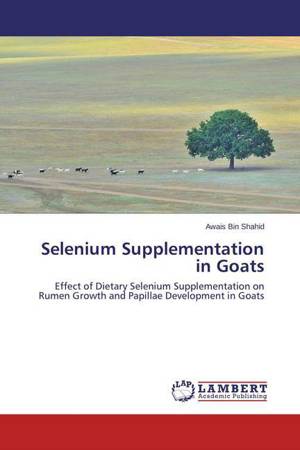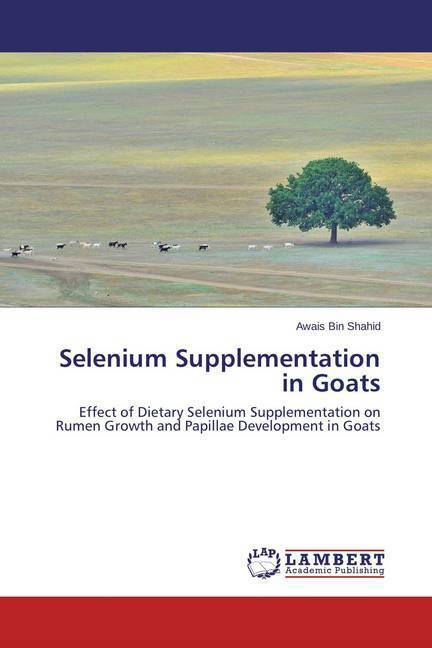
- Afhalen na 1 uur in een winkel met voorraad
- Gratis thuislevering in België vanaf € 30
- Ruim aanbod met 7 miljoen producten
- Afhalen na 1 uur in een winkel met voorraad
- Gratis thuislevering in België vanaf € 30
- Ruim aanbod met 7 miljoen producten
Zoeken
Selenium Supplementation in Goats
Effect of Dietary Selenium Supplementation on Rumen Growth and Papillae Development in Goats
Awais Bin Shahid
Paperback | Engels
€ 37,95
+ 75 punten
Omschrijving
Selenium is an essential micro nutrient in ruminant diet that occurs both in the organic and inorganic form. Ruminants are characterized by rumen which provides a site for microbial fermentation of diet to produce short chain fatty acids (SCFA) mainly acetate, propionate and butyrate. These SCFA are absorbed through papillae present on the interior rumen wall which supply ~80% energy to ruminants, necessary for body maintenance, growth and production. The absorption of SCFA is directly related to the surface area which in turn depends upon the size and number of papillae. Present study was aimed to test the hypothesis that the dietary selenium supplementation effects the rumen and papillae development through SCFA production. Study revealed that the supplementation of both forms of selenium altered the ruminal fermentation pattern. Organic selenium increased the concentrations of individual and total SCFA whereas; inorganic selenium increased the concentration of butyrate in ruminal fluid. Both sources of selenium induced the morpho-histological changes and growth of the ruminal papillae.
Specificaties
Betrokkenen
- Auteur(s):
- Uitgeverij:
Inhoud
- Aantal bladzijden:
- 72
- Taal:
- Engels
Eigenschappen
- Productcode (EAN):
- 9783659797552
- Verschijningsdatum:
- 3/11/2015
- Uitvoering:
- Paperback
- Afmetingen:
- 150 mm x 220 mm
- Gewicht:
- 118 g

Alleen bij Standaard Boekhandel
+ 75 punten op je klantenkaart van Standaard Boekhandel
Beoordelingen
We publiceren alleen reviews die voldoen aan de voorwaarden voor reviews. Bekijk onze voorwaarden voor reviews.











